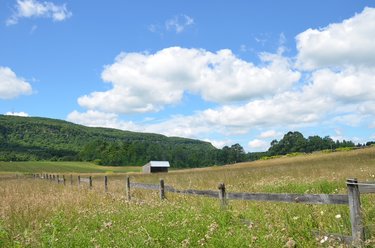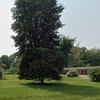Guilderland updates comprehensive plan to center development, preserve rural areas
GUILDERLAND — Three years ago, the nine members of Guilderland’s Comprehensive Plan Update Committee spent 90 minutes listening to a consultant lay out its duties and responsibilities; earlier this week, the Guilderland Town Board codified those years of work in a unanimous eight-second roll-call vote.
The town began to update its two-decades-old plan just before the pandemic, but decided not to proceed until November 2022 because public participation was at the core of the process.
But five months after that first meeting the committee was still working to define its role in the revamp process, with its members and the public both expressing concerns about the role the town’s consultant was playing in the process and the committee’s ability to run the undertaking as it saw fit.
The committee found its footing and, with the help of a number of subcommittees, produced the update, which the town’s planning board thoroughly reviewed, recommending multiple changes.
“I think that it has turned out extremely well,” Robyn Gray told the board near the start of its Nov. 18 meeting. Gray, who served on a housing subcommittee for the update, chairs the Guilderland Coalition for Responsible Growth and had made frequent comments on the update throughout the process.
She did go on to comment, “All the areas that I said you don’t want to just leave it up to the planning board, now it’s all the town board. So how is that being inclusive for community to get involved in some of the implementation of the governance?”
Gray suggested that two important committees in town — the Conservation Advisory Council and the Development Planning Committee — be made into “full-fledged boards so that they actually have some say.”
To ensure the updated plan doesn’t just sit on a shelf but actively guides Guilderland’s future development and policies, the plan recommends that the town board appoint a committee consisting of town officials and community members to assist the planning department in monitoring and assessing implementation efforts.
To further ensure implementation, a five-year action plan is recommended.
The five-year plan calls for annual updates and progress reports to the town board, and outlines specific steps and actions needed to implement each comprehensive plan recommendation, along with targeted timeframes for their initiation and completion.
The plan
The plan seeks to balance the preservation of Guilderland’s distinctive town character with the need to manage inevitable growth pressures by integrating preservation goals directly into development regulations and prioritizing appropriate, sustainable growth patterns
To protect town character — defined as agricultural viability and open vistas — the document proposes tightening the rules on rural development. It calls for the expansion of the Conservation Easement Exemption Program and introduces specific land-use classifications like “Rural, Agriculture & Natural Resources.”
The plan also recommends a Conservation Overlay District to shield the steep slopes of the Helderberg Escarpment and Settles Hill, effectively disallowing non-farm construction in these visually important areas.
Conversely, the update directs growth toward the town’s existing infrastructure. Adopting Smart Growth principles, the plan specifically targets the Western Avenue corridor for higher development density, envisioning a mixed-use town center near the intersection of Western Avenue and Winding Brook Drive.
The objective is to consolidate the tax base and housing diversity within a walkable node, rather than allowing it to sprawl.
Ultimately, the entire strategy hinges on a comprehensive update to the town’s zoning code. The plan argues that, by strictly defining design guidelines and leveraging “green infrastructure,” the town can steer development, preventing it from eroding Guilderland’s character.
Implementation
The plan identifies a zero- to two-year window for the most critical
“foundational” steps
Beyond the administrative framework, the plan offers specific legislative priorities for the immediate future:
— Housing and zoning
The plan calls for a proactive revision of policies regarding Accessory Dwelling Units, specifically recommending the removal of the “family member” occupancy requirement to support the town’s Pro-Housing designation. It also prioritizes the creation of design standards to allow for non-single-family housing types in appropriate districts;
— Environment and agriculture
The town is advised to form a standing Agricultural Lands Committee and to formally codify the review process by the Albany Pine Bush Preserve Commission Technical Committee. Simultaneously, the plan targets 2030 for achieving Bronze-level Climate Smart Community certification.
— Commerce and Infrastructure
Economic strategies focus on creating an inventory of vacant sites for adaptive reuse and instituting a Complete Streets policy. The plan suggests exploring a multi-use trail bridging I-87 to connect Crossgates Mall with Stuyvesant Plaza, alongside safety improvements for pedestrians on Western Avenue.



